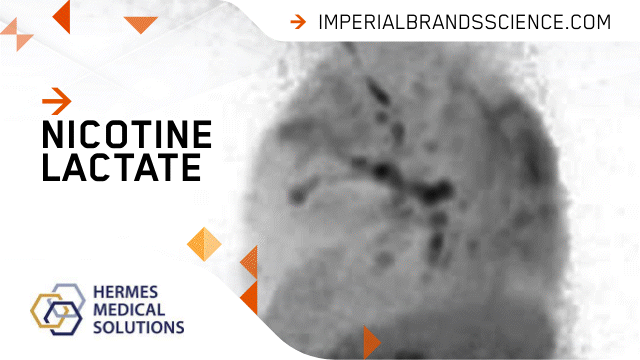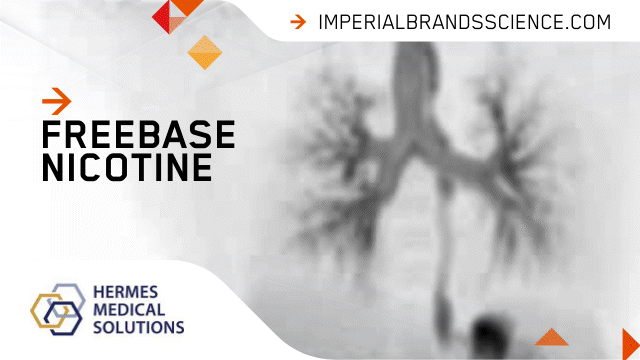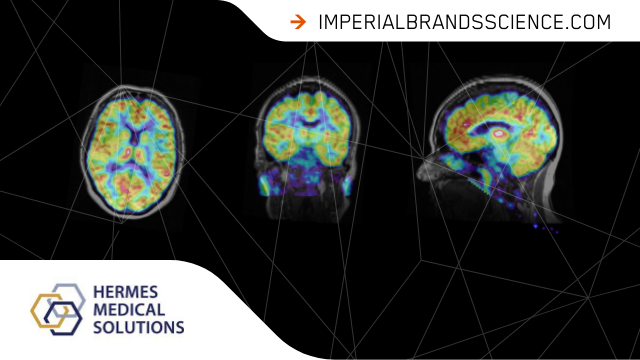//Vaping nicotine salts more closely replicates cigarette-like pulmonary delivery of nicotine compared to traditional freebase nicotine, according to new research
Posted 23/05/2022 9:02am
New clinical data re-affirms nicotine salt-derived e-liquids more closely resemble the smoking experience than their freebase equivalents
Innovative new research by Imperial Brands Science in partnership with Uppsala University, Sweden published in the peer-reviewed journal Pharmaceuticals has investigated the distribution and deposition of inhaled nicotine when adult smokers vape myblu using two distinct nicotine e-liquid formulations: nicotine lactate – more commonly known to consumers as nicotine salts – and ‘freebase’ nicotine.
Imperial’s existing clinical data has shown nicotine salts more closely replicate cigarette-like nicotine delivery than freebase nicotine This latest study’s aim was to gain further mechanistic understanding of how both forms of nicotine are distributed in the respiratory pathways, lungs and brain following inhalation.
In one of the first applications of its type for vaping research, 15 adult smoker subjects were monitored via a combination of Positron Emission Tomography and Computed Tomography (PET-CT) scans in a clinical setting.
The results were as follows:
- As a result of being less volatile and therefore less likely to ‘off gas’ (i.e. release chemicals in the form of a gas), nicotine salts demonstrated combustible cigarette-like delivery of nicotine by reaching the lung efficiently – approximately 10 seconds following vaping.

- Conversely, freebase nicotine’s increased volatility meant it was more likely to off-gas in the upper respiratory tract, meaning it reached the lungs in lower quantities and at a slower speed than nicotine salts.

- It took 4 minutes for nicotine salts to reach the brain, as opposed to 10 minutes for freebase nicotine. The image below illustrates how increased activity is observable across a subject’s brain when nicotine salts were vaped.

- Nicotine salt activity in the brain also peaked more rapidly and declined more steeply than the freebase comparator, again closely mimicking a combustible cigarette.
Reflecting on the study, Simon McDermott, Clinical Research Senior Manager, noted: “In terms of their respective uptake profiles of nicotine in adult smokers’ lungs and brains, these new clinical findings provide a striking visual representation of how vaping nicotine salts is more reminiscent of smoking combustible cigarettes than vaping freebase nicotine.”
Gunnar Antoni from Uppsala University added: “We are pleased to have collaborated with Imperial Brands Science on this important piece of research. The clear, real-time illustration of the differing deposition and kinetics of nicotine lactate and freebase nicotine was nicely demonstrated through this explorative PET-CT imaging study.”
Florence Greep, Imperial Brands EVP Category Director commented: “Our consumer insights inform us that while many adult smokers are actively seeking potentially harm reduced alternatives like vapes, they won’t transition to products that aren’t satisfying.
“Data like these helps us to continue to develop even better consumer experiences with nicotine salts through our ongoing R&D work.”
McDermott concludes: “We believe the more satisfying, cigarette-like nicotine delivery provided by nicotine salts is likely to contribute to greater adult smoker satisfaction and usage, therefore helping further accelerate potential tobacco harm reduction.”
You are free to share this content with credit to Imperial Brands under a Creative Commons Attribution-NoDerivatives 4.0 International (CC BY-ND 4.0) license.

